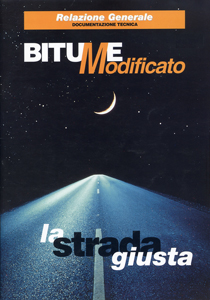Carlo Giavarini
pagg. 181 | Edizioni SITEBSi srl | 2013 | colori
ISBN 978-88-908408-3-8
Prezzo di copertina: 15,00 € (+ 5,00 € contributo spese di spedizione)
Asphalt in our perception is connected to the image of modernity; it is a contemporary material we don’t pay much attention to anymore and it is often denigrated in comparison to some more natural materials like stone and brick.
Asphalt is a natural product that has been used by mankind for centuries, as important in some civilizations as stone and wood. The words bitumen and asphalt, for a long time considered synonymous, have ancient origins. As a binder, asphalt cemented the walls of Babylon; as a waterproofing it supposedly contributed to the buoyancy of Noah’s Ark: in the third millennium before Christ the black Magan boats managed to cross the Indian Ocean thanks to the
layer of asphalt that covered the straw and reeds that those fragile boats were made from. Romans used to sell slabs of asphalt, regularly branded, like bricks.
Greeks used to attach vitreous eyes to bronze statues with asphalt mastic. In the XVIII and XIX Centuries the floors of Sicilian churches and palaces were made with asphaltic stone, as were many local sculptures.
Our roads now are paved with a mixture of bitumen (produced in a crude oil refinery) and crushed stone that we keep calling asphalt. The story continues today and it is still definitely running on asphalt!
Prodotti correlati
Manuali
Manuali
Manuali
Manuali











